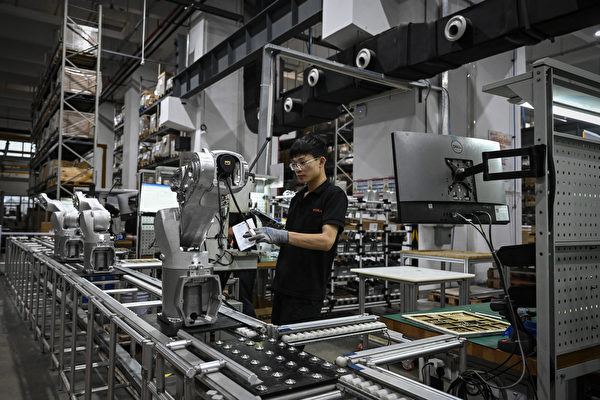In October 2025, the profits of industrial enterprises in China plummeted by 27.1% month-on-month and decreased by 5.5% year-on-year, marking the largest drop in five months, sparking market concerns.
According to data released by the National Bureau of Statistics of the Chinese Communist Party on November 27, the total profits of industrial enterprises above a designated size reached 5.95029 trillion yuan from January to October, representing a year-on-year growth of 1.9%. However, this growth rate decreased by 1.3% compared to the high point in the first nine months (3.2%).
In the month of October alone, the total profits of industrial enterprises above a designated size shifted from growth to decline, dropping by 5.5% year-on-year and plunging by 27.1% month-on-month.
In response to this, Ai Tangming, the chief financial commentator and senior investment advisor at Sina Finance, expressed in a blog post, “The magnitude of the fluctuation is so significant that it is difficult to comprehend… China’s industrial enterprise profits in October dropped by 5.5% year-on-year, marking the first decline in three months.” Previously, the National Bureau of Statistics of the Chinese Communist Party reported that profits of industrial enterprises above a designated size grew by 21.6% year-on-year in September and 20.4% in August.
Yu Weining, the chief statistician of the Industrial Department of the National Bureau of Statistics, stated that against the backdrop of a complex and severe international environment and intertwined cyclical and structural contradictions domestically, it is necessary to coordinate policies and further expand domestic demand, optimize structure, nurture new capabilities, and promote both the quantity and quality of the industrial economy.
Minsheng Securities believes that the shift in the growth rate of industrial enterprise profits to -5.5% in October indicates a new stage of “anti-inner circle.” The current rise in enterprise costs is an inevitable pain in development, and future profits will increasingly rely on pricing power and technological prowess. Continuous policy support is needed to help the industry transition from “price reduction” to “price increase.”
Zhu Qibing, the chief analyst at Bank of China International Securities, expressed the expectation that the authorities will introduce incremental policies at the end of this year or early next year, focusing on both supply and demand to address the problem of “sluggish prices” with simultaneous efforts on “anti-inner circle” and “expanding domestic demand.”
Everbright Securities pointed out that the single-month year-on-year growth rate of industrial enterprise profits in October turned negative, which is related to the rise in the base number of the same period last year, the slowdown in industrial production, and the decline in profit margins. In terms of structure, only industries like chemicals, automobiles, electronics, food and beverages maintained positive growth in profit rate within the manufacturing sector, while other industries showed varying degrees of profit weakening. The support of the fourth-quarter incremental fiscal policy has not yet been reflected at the data level, and it is expected that industrial enterprise profits will continue to show weak performance in the fourth quarter.
Although the official data released by the Chinese Communist Party indicates a decline in industrial enterprise profits, it is widely acknowledged that the National Bureau of Statistics of the Chinese Communist Party has a history of embellishing and falsifying publicly available economic data. Therefore, the actual data may be even worse.
In China, industrial enterprises above a designated size refer to industrial legal entities with an annual main business income of 20 million yuan or more.

